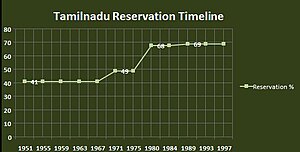IntroductionAccording to Asian Development Bank, the term “public-private partnership” describes a range of possible relationships among public and private entities in the context of infrastructure and other services. The public partners in a PPP are government entities, including ministries, departments, municipalities, or state-owned enterprises. The private partners can be local or international and may include businesses or investors with technical or financial expertise relevant to the project. Increasingly, PPPs may also include nongovernment organizations (NGOs) and/or community-based organizations (CBOs) who represent stakeholders directly affected by the project.
The notion of Public Private Partnerships forms an inseparable component of myriad of policies on healthcare delivery at local, national and international levels. The probable reason for the popularity of this category of strategic partnership is its potential to deliver fast results by utilizing the efficiency and accountability of private domain to produce an impact in the public domain.
Increasing importance of Public Private Partnerships in healthcare delivery
Blame it on the lower per capita expenditure on healthcare by the government or preferential access of bigger fraction of population to private healthcare setups, the private healthcare sector is definitely gaining importance in the healthcare delivery system. In monetary terms, the Private Sector contribution to the healthcare sector at ~75 percent is amongst the highest in the world in percentage. Public spending, on the other hand, is amongst the lowest in the world and is ~23 percentage points lower than the global average (KPMG ASSOCHAM, 2011). In quantitative terms, 80 percent of households prefer to use private sector treatment in India for minor illnesses, and 75 percent of households prefer to go to private sector for major illness (Uplekar, Pathania, & Raviglione)
In this prevailing situation, private sector cannot be kept aloof while formulating any public policy on healthcare delivery if you are aiming for a successful policy. The partnership with private sector can be done using different instruments whereby each partner is liable to deliver the terms by legally binding contract(s).
• service contracts
• management contracts
• affermage or lease contracts
• build-operate-transfer (BOT) and similar arrangements
• concessions
• joint ventures
Under the 10th Five Year Plan (2002-2007), initiatives have been taken to define the role of the government, private and voluntary organizations in meeting the growing needs for healthcare services and meeting the goals of National Health Programmes. The National Health Policy of India (2002) and the National Rural Health Mission (NRHM) formulated for the period 2005-2012, takes into consideration the important role played by private players and civil society organizations in meeting the health goals of the country.
Few successful PPP projects are mentioned below (Technopak, 2010):
• Karnataka Karuna Trust; Yashaswini Scheme
• Tamil Nadu Mobile health services
• Andhra Pradesh Aarogyasri
• Andhra Pradesh Diagnostic Services for 4 Medical Colleges
• West Bengal Mobile health services
• Madhya Pradesh Community outreach program
• Rajasthan Contracting in public hospitals
• Gujarat Chiranjeevi Project
Areas where Public Private Partnerships have delivered for achieving Public Health goals
In the value chain of healthcare, public private partnerships can be used for almost any week link in the chain. Following are some of the areas where public private partnerships have been used (KPMG):
1. Utilizing the Private infrastructure for meeting the objectives of a public health program eg: Gujarat Chiranjeevi Project
2. Strengthening a particular aspect of health service, e.g. Contracting for drug store operation in Sawai Man Singh hospital, Jaipur
3. Providing Insurance in collaboration with Private Insurers, e.g: Rajiv Aarogyasri Health Insurance Scheme in AP between the Government and the New India Assurance Company.
4. Collaboration to develop a technological expertise for public welfare eg: ‘Karnataka Integrated Tele-Medicine and Tele-Health Project (KITTH) by Government of Karnataka, the Naryana Hrudalaya Hospital in Bangalore and the Indian Space Research Organization
5. Management of a Healthcare facility by a civil society organization eg: Karnataka Government and Karuna trust for management of PHCs to serve tribal communities in Gumballi and Sugganahalli
6. Community Outreach eg: Uttaranchal Mobile Hospital and Research Center(UMHRC) between Government of Uttaranchal, Birla Institute of Scientific Research (BISR) and the Technology Information, Forecasting and Assessment Council(TIFAC)
7. Product Development eg: Path Malaria Vaccine Initiative(MVI, 1999), Drugs for Neglected Disease Initiative (DNDi, 2003)
Some Concerns with Public Private Partnerships
Following are some of the pragmatic issues and concerns that are important for the success of Public Private Partnerships
Defining partnerships: The definition of contracts and agreements should be done keeping Public interest and Private stake on an equal platform such that there is no skewing of the agreement for the benefit of any specific party involved. There may be cases of undervaluing an asset to be divested, thereby skewing the deal in favor of the private party.
Conflicts of Interests: A careful attention should be paid to any conflict of interests, both apparent and unapparent. Such personal biases in public decision making are very common. This may lead to preferential choice of one private partner over another, leading to an inferior deal for the government.
Failure to monitor Partnership performance: There can be pitfalls in monitoring the partnerships’ performance from the government’s side which could lead to failure of the scheme or substandard outcomes.
Conclusion
With many examples available in hand, where Public Private Partnerships have performed successfully to fill the gaps in healthcare delivery system to promote equitable delivery of services. Public Private Partnership may not be a sole dependable premise, but it is surely an effective and efficient one.
Works Cited
KPMG ASSOCHAM. (2011). Emerging Trends in Healthcare: A Journey from Bench to Bedside.
KPMG. (n.d.). Public Private Partnerships in India.
Technopak. (2010). “A Peek into the Future of Healthcare: Trends for 2010”.
Uplekar, M., Pathania, V., & Raviglione, M. (n.d.). Private Practioners and Public Health: Week links in Tuberculosis control. The Lancet.
http://www.adb.org/India/PPP/about-definition.asp
 View Dr Sandeep Moolchandani’s profile
View Dr Sandeep Moolchandani’s profile





















